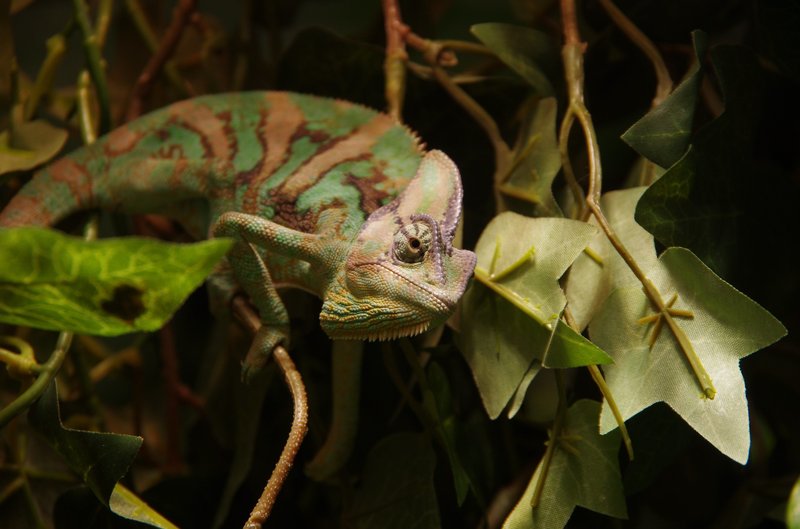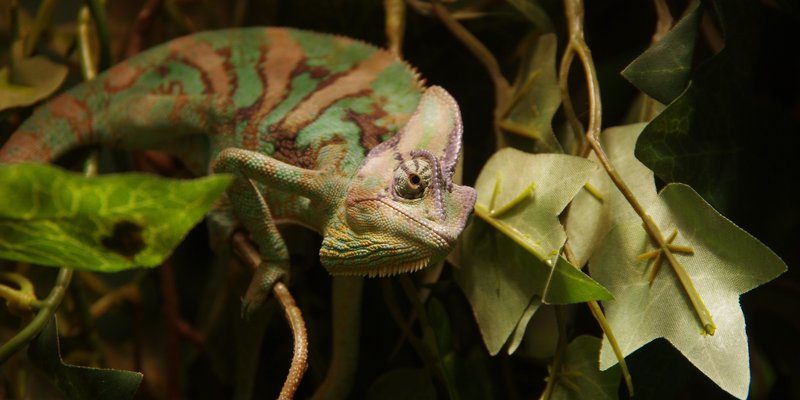
In this article, we’re going to dive deep into the state of chameleons and the conservation efforts working tirelessly to protect them. From habitat loss to climate change, there are many factors contributing to their decline. But it’s not all doom and gloom! People around the world are coming together to ensure these unique reptiles don’t disappear. Let’s explore the challenges chameleons face and the actions being taken to safeguard their future.
Understanding Chameleon Endangerment
To grasp why chameleons are endangered, we need to look at their situation a little closer. Chameleons are mostly found in *Africa*, especially Madagascar, but they also inhabit parts of *Asia* and *Europe*. The variety of species and their specialized habitats shaped by lush forests and unique climates make them particularly vulnerable.
One primary reason for their endangerment is habitat destruction. As humans expand cities and create agricultural lands, chameleons lose their homes. Think of it this way: if someone were to build a new house where you live, you’d have nowhere to go. It’s the same for chameleons that depend on specific environments to thrive.
Another major threat is the pet trade. While it sounds exciting to keep a chameleon as a pet, this increased demand can lead to over-collection in the wild. Many species are taken from their natural habitats, disrupting local populations. It’s heartbreaking to think of these beautiful creatures being plucked from their homes in pursuit of profit.
The Impact of Climate Change
Climate change is another significant player in the decline of chameleon populations. As temperatures rise and weather patterns change, their habitats are affected in various ways. Some chameleons thrive in moist environments, and any shifts toward drier conditions can be detrimental.
Here’s something to think about: if you’ve ever tried to grow a plant in the wrong climate, you know how difficult it can be. Chameleons are no different. They depend on specific temperatures and humidity levels to survive. A shift in climate could mean their homes turn inhospitable, making it nearly impossible for them to find food or reproduce.
Moreover, rising temperatures can lead to increased competition for food. Since chameleons rely on insects, any changes in ecosystem dynamics can have ripple effects. If their food source diminishes, chameleons will struggle to survive, which can lead to further population declines.
Conservation Initiatives: What’s Being Done?
Now for the good news—various organizations and initiatives are working hard to protect chameleons and their habitats. These conservation efforts take many forms and involve local communities, governments, and international partnerships.
One approach is habitat protection. By establishing reserves and protected areas, we can ensure that chameleons have safe places to live. These reserves help maintain the biodiversity of the ecosystem and support not just chameleons but many other species as well.
Additionally, some organizations focus on education and awareness. By informing local communities about the importance of chameleons and their role in the ecosystem, people are more likely to engage in conservation efforts. Picture a community coming together, celebrating their unique wildlife and working to protect it. When individuals become stewards of nature, it fosters a deep appreciation for local species and encourages sustainable practices.
Research and Monitoring Efforts
Research plays a vital role in understanding the status of chameleons. Scientists and conservationists study the different species, their populations, and their behavior. This information helps formulate strategies for effective conservation.
For example, scientists track chameleon populations to identify trends. If a certain species is declining rapidly, this can signal a larger environmental issue that needs to be addressed. By gathering data, conservationists can prioritize efforts where they’re needed the most.
Additionally, breeding programs in captivity are being implemented for critically endangered species. These efforts can lead to reintroduction into the wild, giving chameleons a second chance. It’s like giving a helping hand to a friend who’s fallen—it doesn’t just lift them up; it helps rebuild their confidence to thrive independently again.
How You Can Help
You might be wondering, “What can I do to help chameleons?” There are actually several actions you can take! One way is to support conservation organizations that focus on reptiles and chameleons specifically. Donations can go a long way in funding critical projects that protect these amazing creatures and their habitats.
Another option is to educate yourself and others about chameleons. Share their story with friends and family! The more people know about the challenges facing these reptiles, the more likely they’ll join efforts to protect them.
Lastly, if you’re considering a pet chameleon, ensure you’re adopting from reputable breeders who prioritize ethical practices. Supporting sustainable and responsible ownership can help reduce the demand for wild-caught chameleons.
The Role of Local Communities in Conservation
Local communities play a crucial role in conservation efforts. When they are engaged and invested in protecting their natural resources, the results can be remarkable. In many areas, local people are even trained as conservationists, learning to monitor wildlife and participate in research.
Community-led initiatives can lead to sustainable development practices that benefit both wildlife and human populations. For example, community members can develop ecotourism programs, allowing visitors to observe chameleons and their habitats without harming them.
By involving locals, conservation efforts become more effective. When people have a stake in preserving their environment, it fosters a collective sense of responsibility. It’s a win-win for everyone involved—people can thrive alongside nature, and chameleons can continue to exist in their natural habitats.
In conclusion, while chameleons face numerous challenges that threaten their survival, there’s still hope. Conservation efforts are underway, and with the involvement of local communities and individuals, we can turn the tide in their favor.
So, the next time you marvel at a chameleon’s incredible ability to blend into its environment, remember the struggles they’re facing behind the scenes. Let’s work together to ensure these amazing reptiles don’t just survive but thrive. With awareness, action, and compassion, we can help protect chameleons and the beautiful ecosystems they call home.

